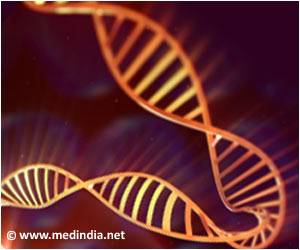A newly discovered skin cell model has been found to improve the study of genetic mutations linked to heart disease and stroke risk.

‘Newly discovered skin cell model can help to improve the study of genetic mutations that are linked to heart disease, stroke risk.’





An inherited mutation in a gene that encodes the important muscle protein alpha-actin affects arteries near the heart and at the base of the brain -- areas where affected tissue cannot be collected safely and thus cannot be studied.To overcome this obstacle, researchers at UT Southwestern Medical Center converted skin cells (fibroblasts) from minimally invasive biopsies into muscle-like fibroblasts by directly stimulating artery muscle genes. Traditionally, skin cells are used to study basic cell physiology, not muscle gene mutations.
"Using this new model, we compared cells from living donors with the ACTA2-R258C mutation to cells without the mutation," said study senior author Dr. Kristine Kamm, a Professor of Physiology at UT Southwestern.
"We found that the mutation disrupts several functions of the cytoskeleton, an important organ for cell contraction, movement, structure, and other vital functions. The mutation is expected to have a more damaging effect in smooth muscle of the arteries, which contain high levels of the protein made by the ACTA2 gene."
The study was published online today by Proceedings of the National Academy of Sciences (PNAS).
Advertisement
Most aneurysms are due to aging, tobacco use, injury, or disease. But an estimated 20 to 25 percent of cases stem from familial thoracic aortic aneurysm and dissection (familial TAAD), a genetic condition linked to a single, dominant mutation in ACTA2 or other genes. For dominant mutations, only one copy of an altered gene is needed for the trait to appear.
Advertisement
Using the skin cell model, researchers found that the R258C mutation works in a dominant manner to suppress the contraction of myofibroblasts - fibroblasts involved in wound healing that are similar to smooth muscle, said lead author Dr. Zhenan Liu, a research scientist in the laboratory that Dr. Kamm runs with Dr. James Stull, also a Professor of Physiology.
Source-Eurekalert















